
The researchers were able to successfully synthesize the cancer-fighting compound EBC-46.
A new and improved way to produce an acclaimed cancer-fighting compound.
Researchers at Stanford University have found a rapid and sustainable approach to synthesizing a promising cancer-fighting compound right in the lab. Because there is only one plant species that produces the substance naturally, and that species only grows in a tiny region of Northeastern Australia’s rainforest, the compound’s availability has been restricted.
The EBC-46 compound, also known as tigilanol tiglate, functions by promoting a localized immune response against tumors. The response shatters the blood vessels of the tumor, ultimately killing the cancerous cells. Following its very high success rate in treating a particular kind of cancer in dogs, clinical trials testing EBC-46 in humans have recently begun.
However, due to its complicated structure, EBC-46 looked to be synthetically inaccessible, meaning that no conceivable approach for making it practically in a laboratory appeared to exist. However, the Stanford scientists demonstrated how to chemically convert a plentiful, plant-based starting material into EBC-46 for the first time by using a clever process.
An further benefit of this approach is the ability to create “analogs” of EBC-46, which are chemically similar to the original compound but may be much more effective and capable of treating a surprising number of other serious diseases. These diseases, which include AIDS, multiple sclerosis, and Alzheimer’s disease, all share biological pathways that are influenced by EBC-46’s target, a key enzyme known as protein kinase C, or PKC.
“We are very excited to report the first scalable synthesis of EBC-46,” said Paul Wender, the Francis W. Bergstrom Professor in the School of Humanities and Sciences, professor of chemistry and, by courtesy, of chemical and systems biology at Stanford, and corresponding author of a study describing the results in the journal Nature Chemistry. “Being able to make EBC-46 in the lab really opens up tremendous research and clinical opportunities.”
Co-authors of the study are Zachary Gentry, David Fanelli, Owen McAteer, and Edward Njoo, all of whom are PhD students in Wender’s lab, along with former member Quang Luu-Nguyen.
Wender conveyed the immense satisfaction the research team felt over the EBC-46 synthesis breakthrough. “If you were to have visited the lab the first few weeks after they succeeded,” said Wender, “you would’ve seen my stellar colleagues smiling from ear to ear. They were able to do something many people had considered impossible.”
From a remote region
Tigilanol tiglate initially turned up through an automated drug candidate screening process by QBiotics, an Australian company. In nature, the compound appears in the seeds of the pink fruit of the blushwood tree, Fontainea picrosperma. Marsupials such as musky rat-kangaroos that eat blushwood fruit avoid the tigilanol tiglate-rich seeds, which when ingested trigger vomiting and diarrhea.
Injecting far smaller doses of EBC-46 directly into some solid tumors modifies the cellular signaling by PKC. Specifically, EBC-46 is proposed to activate certain forms of PKC, which in turn influence the activity of various proteins in the cancerous cells, attracting an immune response by the host’s body. The resulting inflammation makes the tumor’s vasculature, or blood vessels, leaky, and this hemorrhaging causes the tumorous growth to die. In the case of external, cutaneous malignancies, the tumors scab up and fall off, and ways of delivering EBC-46 to internal tumors are being investigated.
In 2020, both the European Medicines Agency and the Food and Drug Administration in the United States approved an EBC-46–based medication, sold under the brand name Stelfonta, to treat mast cell cancer, the most common skin tumors in dogs. A study showed a 75% cure rate after a single injection and an 88% rate following a second dose. Clinical trials have since commenced for skin, head and neck, and soft tissue cancers in humans.
Based on these emerging research and clinical needs coupled with the source seeds’ geographical limitations, scientists have considered setting up special plantations for blushwood trees. But doing so presents a host of issues. For starters, the trees require pollination, meaning the right sort of pollinating animals must be on hand, plus trees must be planted in appropriate densities and distances to aid pollination. Furthermore, seasonal and climate variations affect the trees, along with pathogens. Setting aside plots for blushwood trees further poses land use problems.
“For sustainable, reliable production of EBC-46 in the quantities we need,” Wender said, “we really need to go the synthetic route.”
Making EBC-46 from scratch
A good starting point for making EBC-46, Wender and colleagues realized, is the plant-derived compound phorbol. More than 7,000 plant species produce phorbol derivatives worldwide and phorbol-rich seeds are commercially inexpensive. The researchers selected Croton tiglium, commonly known as purging croton, an herb used in traditional Chinese medicine.
The first step in preparing EBC-46, Wender explains, jibes with an everyday experience. “You buy a sack of these seeds, and it’s not unlike making coffee in the morning,” said Wender. “You grind up the seeds and run some hot solvent through them to extract the active ingredient,” in this case a phorbol-rich oil.
After processing the oil to yield phorbol, the researchers then had to figure out how to overcome the previously insurmountable challenge of bedecking a part of the molecule, called the B ring, with carefully placed oxygen atoms. This is required to enable EBC-46 to interact with PKC and modify the enzyme’s activity in cells.
To guide their chemical and biological studies, the researchers relied on instrumentation at the Stanford Neuroscience Microscopy Service, the Stanford Cancer Institute Proteomics/Mass Spectrometry Shared Resource, and the Stanford Sherlock cluster for computer modeling.
With this guidance, the team succeeded in adding extra oxygen atoms to phorbol’s B ring, first via a so-called ene (pronounced “een”) reaction conducted under flow conditions, where reactants mix as they run together through tubing. The team then introduced other B ring groups in a stepwise, controlled manner to obtain the desired spatial arrangements of the atoms. In total, only four to six steps were required to obtain analogs of EBC-46 and a dozen steps to reach EBC-46 itself.
Wender hopes that the far broader availability of EBC-46 and its PKC-influencing cousin compounds afforded by this breakthrough approach will accelerate research into potentially revolutionary new treatments.
“As we learn more and more about how cells function, we’re learning more about how we can control that functionality,” said Wender. “That control of functionality is particularly important in dealing with cells that go rogue in diseases ranging from cancer to Alzheimer’s.”
Reference: “Practical synthesis of the therapeutic leads tigilanol tiglate and its analogues” by Paul A. Wender, Zachary O. Gentry, David J. Fanelli, Quang H. Luu-Nguyen, Owen D. McAteer, and Edward Njoo, 3 October 2022, Nature Chemistry.
DOI: 10.1038/s41557-022-01048-2


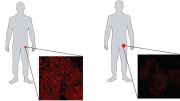

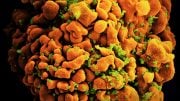
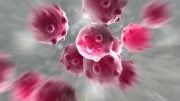
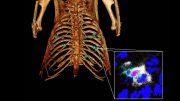
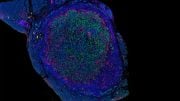
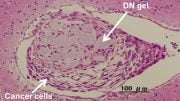
Be the first to comment on "Stanford Researchers Make a Cancer Breakthrough – Clever Synthesis of Rare Cancer-Fighting Compound"